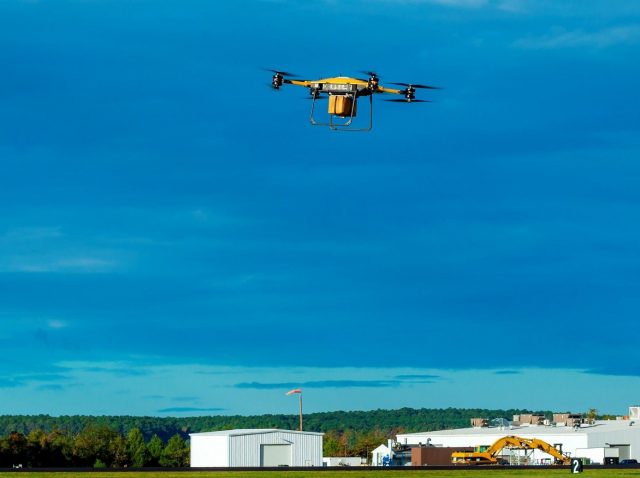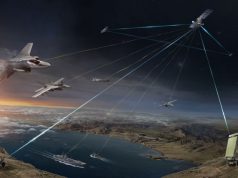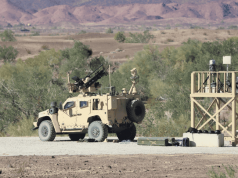The US Navy and Marine Corps recently got their two cargo resupply prototypes together for a demonstration of their capabilities to senior leadership.
Both service branches have their own prototypes they are testing as a way of resupplying warfighters on the front line using unmanned systems capable of delivering necessary supplies from a distance in a variety of scenarios.
The navy has procured the Blue Water logistics UAS (BWUAS) for testing, while the marines are trialing the Tactical Resupply Unmanned Aircraft System (TRV-150 – TRUAS).
TRUAS is a marine-focused platform for tactical resupply primarily on shore. It has a shorter range than Blue Water, but a heavier lift around 150 pounds. It’s intended to transport items like food and tactical gear to Marines in the field.
Blue Water is a Navy-focused platform for resupply at sea. It has a longer range, and a smaller footprint to better fit onto ships. Its cargo capacity is smaller than TRUAS at 30-50 pounds.
The department demonstrated these capabilities during an event on October 27 at NAWCAD’s Webster Outlying Field.
“It’s exciting to see the close collaboration between the program office, NAWCAD and the operators,” said NAVAIR Commander Vice Adm. Carl Chebi, who attended the event. “The team’s ‘can do’ spirit and innovative acquisition approach will speed much-needed capability to the Navy and Marine Corps.”
“The demonstration highlighted the basic capability of the systems to operate autonomously, to have mission plans uploaded and to execute the flights with little to no input while they were in the air,” said Cmdr. Seth Ervin, Air Test and Evaluation Squadron (UX) 24 chief test pilot.
“These systems have to be transportable, so they have to come in cases and they have to be expeditionary,” Ervin said. “And that was really the focus of today, to walk through, in a fairly quick fashion, and show how easy it is for a basically trained Marine or Sailor to get the system out of a box, to get it set up, to get it uploaded, and hit go.”
Ervin’s team demonstrated the capabilities of a land and air drop using the TRV-150 and different payloads. For the first mission they did an air drop, where the system flew to pre-programmed point, dropped the payload and flew back. During the second leg, the TRV-150 flew to specified coordinates, landed and released the payload. The operator on the ground retrieved the package and once it was safely out of the way, the operator pressed a button to return the UAS to its location.
Operators then flew BWUAS to demonstrate a vertical takeoff, transition to forward flight and then back to VTOL for an air drop. The system then transitioned back to forward flight and returned with a vertical landing.
“Unmanned logistics supply aircraft will keep sailors and marines out of harm’s way and can provide much needed logistics support and assistance with humanitarian relief efforts,” said Rear Adm. Brian Corey, the Program Executive Office for Unmanned Aviation and Strike Weapons. “With unmanned assets, we have a resupply that will be much more effective and give our operators the ability to maneuver around the battlefield in ways they haven’t been able to do before.”
Both the TRUAS and BWUAS teams are working closely with their Marine Corps and Military Sealift Command counterparts to rapidly bring these systems to the warfighter through innovative, non-traditional acquisition strategies. Both teams directly engaged with fleet users to understand what capability they need, and how they will use the capability in operation.
The vision is to have a family of unmanned cargo resupply systems for the Navy and Marine Corps ─ some on the ground and some in the air, Corey said.



























